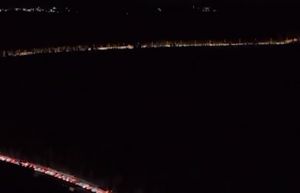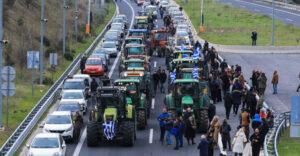“Tied” to the large pool of the green tariff, estimated at 5.6 million customers in DEI, consumers remain “tied” two and a half months after the launch of the unified tariff.
Competition on the green tariff, but especially the fall in international gas and wholesale prices have decelerated electricity prices, offering pre-subsidy cheaper kilowatt-hours by up to 30% compared to the same period last year and just 3% after subsidies.
This reveals that the government has achieved its key objective, which was for consumers to pay roughly the same tariff for electricity from the beginning of the year without having to subsidise it.
However, mobility in the networks is still limited.
“The alternative suppliers’ big gamble is to take customers away from the power utility,” says an executive of the energy providers. But this does not seem to be achieved as the movements observed are of a customer base that is mainly recycled between suppliers as customers do not leave DEI.
It is estimated that out of the 100 consumers taken by private providers, a percentage of well under 50% comes from the Utility, say the market, when based on figures it should be 75%, pointing out that competition is concentrated among alternative providers.
Stagnation in blue tariffs
Limited mobility is also seen in the yellow tariffs, which have benefited from a 50% drop in wholesale prices in a year, while stagnation prevails in the blue where prices have braked at 9.7 cents, which is Protergia’s six-month fixed plan with a fixed 9.9 cents per month.
Executives at energy suppliers who monitor the performance of forward products on a daily basis argue that with the low price conditions it would make sense to shuffle the deck by offering a charge below 9 cents for a six-month contract.
Something we are expected to see in the coming period with the ally of the end of the mild winter, sufficient reserves and abundant gas, factors that advocate even lower prices, from 10% to 15%, in the cost of electricity.
In recent days, the pressure that existed at the beginning of the month on international prices has braked and gas at the TTF is in the region of 25 euros a megawatt hour. “Logic says prices have to come down,” the companies argue.
For the market, a fall in the price to 20 euros is considered a critical turning point, which would definitively signal a return to pre-crisis levels, which could justify a brake on the fall in prices.
If international gas prices remain at current levels, estimates are that there is visibility of a further fall in prices in April.
This limits competition as small price differences between alternative suppliers do not provide an incentive to switch supplier.
It is noteworthy that from the RAEY’s list of prices for March, seven green tariffs set a price of 10.2 cents to 10.8 cents per kilowatt hour. Also, two schemes had charges even below 10 cents, pushing prices down compared to the previous two months.
March, however, showed the willingness of the strong providers to control the fall in prices as the international conditions favoured “sinking” prices.
Thus March tariffs, although generally lower than those of February following the fall in wholesale prices, were differentiated in the area of discounts.
As Mr Thanasis Gikas from the allazorevma price comparison platform reports, the DEI did not pass on to retail prices the entire reduction in wholesale prices of last month, which stood at 72.86 euros per megawatt-hour.
The mechanism it used to do so and to increase its profit margin was the restraint of the green tariff price (10.8 cents a kilowatt hour) and the possibility of varying the discount it gives on the base price.
For March, DEI reduced this discount by half (from 20% to 10%). By keeping the discount at 20%, the price with a consumption of 300 kilowatt-hours per month would be 9.2 cents.
Mitsotakis to the EPP: No border change can be tolerated by Europe – Watch his speech
Shareholding changes
Electricity tariffs are, however, the one part of the market that is subject to constant changes. The second is linked to the shareholding changes that are underway in more than two electricity suppliers and are bringing about significant shake-ups and carousels.
The divorce between Helleniq Energy and Italy’s Edison appears to be final and its conclusion may shape new market balances, which will be determined by the outcome of the deal and, in particular, which of the two shareholders will acquire a majority stake.
It is recalled that the former EL.PE. s retain a 35% stake in DEPA Emporia, which in turn controls Natural Gas, with the former’s management pushing to quickly clarify the status of the company so that there is no internal competition with two companies in retail.
However, reorganizations are also underway at another supply company, which is expected to be resolved soon as there are also major strategic moves in the pipeline that will affect the structure and direction of the group.
With DEI retaining the lion’s share of the retail market and the electricity market turning a new page and turning to integrated energy products and services, the supply sector is expected to enter a new cycle of consolidation in the coming period.
Mytilineos has not hidden its acquisition ambitions, which currently has a 15% share of the Greek market, which it intends to increase to 20% by 2024, with the aim of doubling to 30% by 2026 through new acquisitions and organic growth.
Ask me anything
Explore related questions





